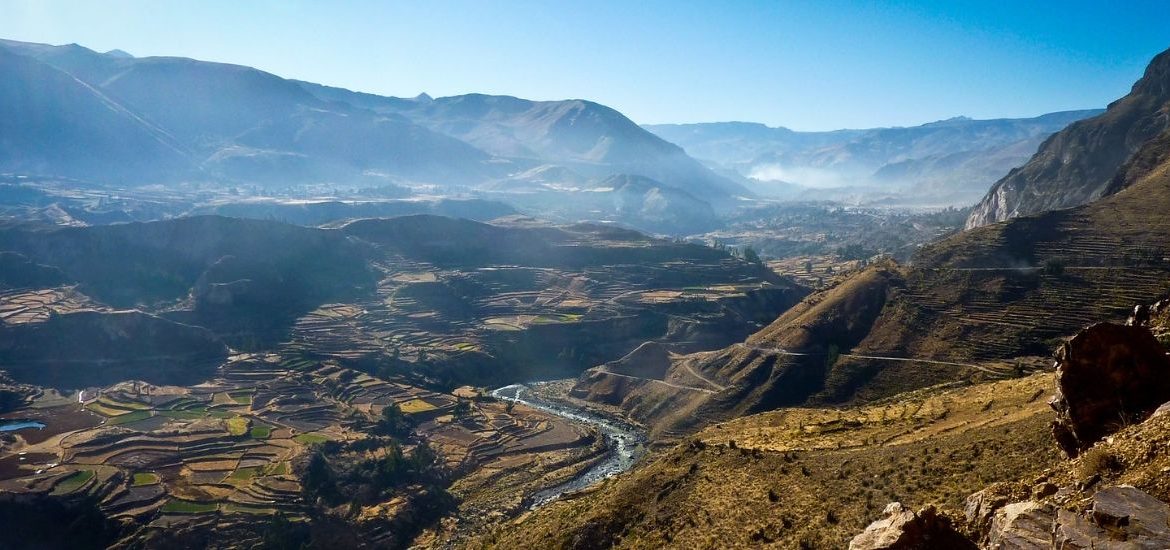Numerous intriguing locations, some less evident yet full of cultural allure, can be found in Peru. One such gem is the Colca Valley which houses the Colca Canyon and the village of Chivay. These small towns preserve deep-rooted traditions amidst stunning natural landscapes, offering visitors a historical journey through Peruvian culture.
The Colca Canyon, one of the world’s deepest canyons, is a testament to Peru’s cultural and historical significance. Here, travelers can witness firsthand the resilience of its people, shaped by centuries of history and conquests, yet steadfast in preserving their heritage. Chivay itself reflects a history marked by Spanish colonization, while proudly maintaining its ancestral customs.
While often visited briefly by tourists, the Colca and Chivay region holds profound surprises and merits exploration. Beyond the canyon and village, nearby destinations beckon with their own allure, promising further enriching experiences in Peru’s diverse tapestry of landscapes and traditions. Prepare to delve deeper into this extraordinary region and discover its hidden treasures before setting foot on Peruvian soil.
Chivay Village Geography
Chivay, approximately 180 km north of Arequipa’s main square sits in the Andean plateau amidst varying climatic conditions—cold, dry winters and rainy summers. At over 3,600 meters above sea level, the altitude can pose challenges for those not acclimatized to Peru’s high-altitude destinations.
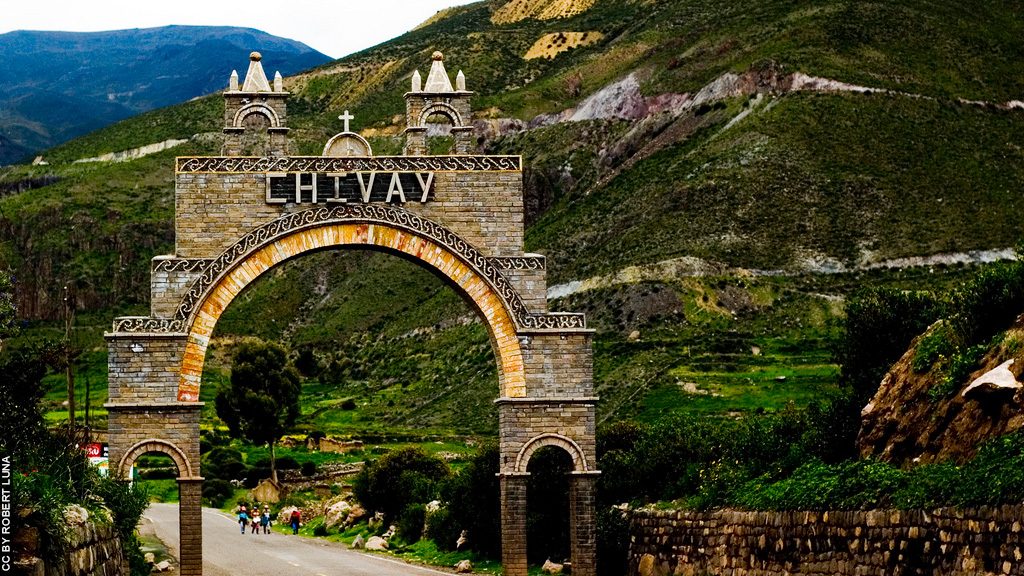
The journey to the Colca Valley from Chivay involves even higher altitudes, requiring careful management of altitude sickness to fully enjoy the travel experience. The Colca Valley houses the renowned Colca Canyon, one of the world’s largest, attracting around 300,000 visitors annually and ranking among Peru’s most visited destinations.
Exploring this region also opens doors to nearby attractions like the Nazca region, approximately 680 kilometers away, known for its Nazca Lines, and Puno, home to Lake Titicaca, about 298 kilometers distant. Visiting Chivay and the Colca Valley offers a remarkable opportunity to witness Peru’s natural wonders and explore its diverse cultural and historical offerings.
Discovering “El Cañón del Colca”
The Colca Canyon is one of the world’s deepest canyons, even deeper than the Grand Canyon in the United States. The Colca Canyon is a site of global significance due to its unique natural features. Recognized as a UNESCO Global Geopark in 2019, it spans 100 km and reaches a depth of approximately 4,160 meters.
This area is biologically diverse, home to around 231 animal species and 300 plant species. Historically, the Colca Canyon region was inhabited by pre-Inca civilizations from 5,000 to 6,000 BC, who were instrumental in developing agricultural techniques and domesticating animals around 200 to 600 AD.
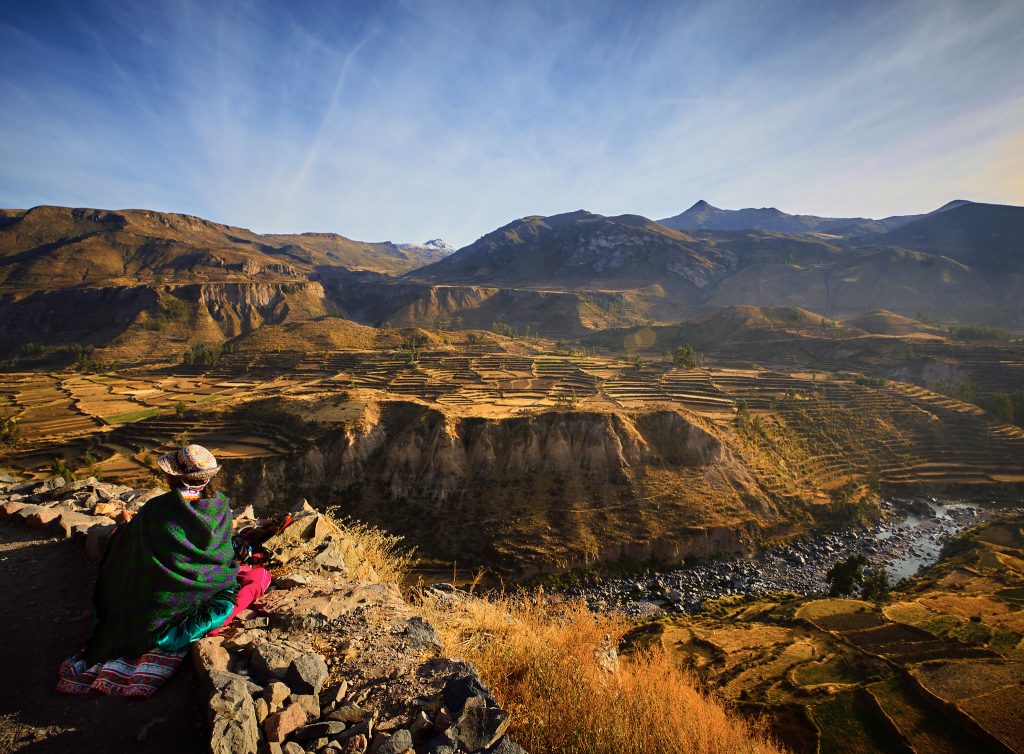
These early cultures laid the groundwork for later civilizations. Visiting Colca Canyon offers an unforgettable journey that takes you through the ancient history and natural beauty of the Inca’s homeland. If you are interested in Colca Canyon and are thinking about adding it to your travel journey, here are some attractions you must see while in the Chivay region and, more specifically, in this giant canyon.
Cruz del Cóndor
This viewpoint is located at one of the highest points of the Colca Canyon, which guarantees fascinating views of all the scenery and, in addition, allows the observation of one of Peru’s most emblematic birds, the Andean Condor. This giant bird is one of the reasons why many travelers come to Colca
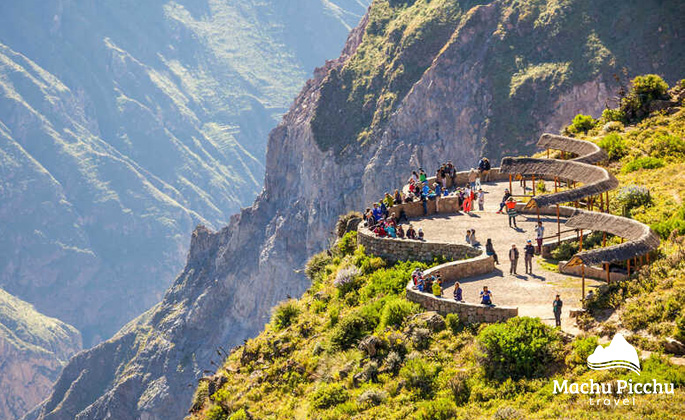
The Andean condor is the largest species of bird in the world, with a wingspan from wing to wing of up to 3 meters in length. The Condor usually makes its flights in the morning, between 9 am and 11 am, which is the recommended time to visit the attraction and see it up close.
This natural viewpoint also allows you to appreciate the nuances created by nature, between the aridity of the region, the rocks covered with vegetation, and the silhouette of the river that originated this immense canyon. Added to this, on the horizon, it is also possible to see some of the snowy mountains that surround the region, among them is the Misti volcano.
Cultural significance of the Andean Condor
You must be wondering why the Andean Condor is such an important bird for Peru, here we will explain a little about it because, in addition to the biological characteristics that make this bird so fascinating, it represents much more for the Peruvian people.
Thus, historically the Andean Condor has a very intrinsic relationship with mysticism, as many legends say that this bird was the witness to many events and births of civilizations that were important for the construction of Peruvian lands.

The Incas, without a doubt, were the biggest admirers of this bird, which received a tribute, including within the Historic Sanctuary of Machu Picchu, with a temple dedicated only to this bird, which was considered a deity for this people.
In addition, for the Andean people, the main deities that took care of the world formed a trinity, in which the puma represented the earth, the snake represented the world of the dead and the condor represented the sky, and until the present day, this bird continues to be part of some of Peru’s festivities.
Hot Springs
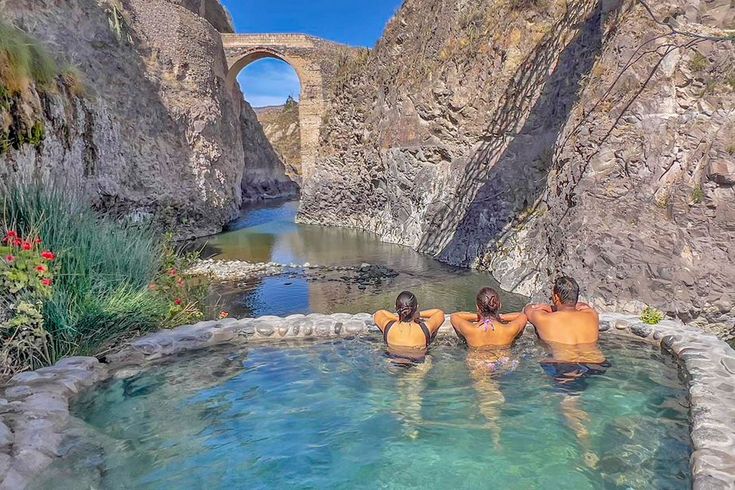
If you want to relax amid so many adventures, we also recommend visiting the Colca Valley’s hot springs, which are located about 3 km from the small Chivay Village. In general, these waters not only help to relax but can also have therapeutic effects with the heat of up to 38ºC of their waters and also due to their mineral composition.
The Colca Canyon trek is unmissable! If you want to have another point of view on life and cultural experiences in Peru, be sure to discover our packages for your trip to Peru and get inspired to build your next vacation trip with Viagens Machu Picchu. If you prefer, you can also contact our experts and we will together create the perfect trip for you, tailor-made and according to your interests!
Viagens Machu Picchu, journeys that inspire, moments that last.
| Spanish > Viagens Machu Picchu |
| English >Viagens Machu Picchu |
| Portuguese > Viagens Machu Picchu |

